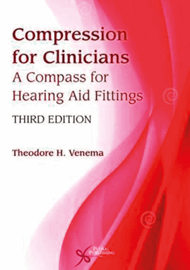This book aims to make the sometimes difficult-to-understand theories more understandable. The author achieves this in an engaging and often amusing way; you can never have too many song lyrics in a book to help the reader understand the wider picture!
The book begins with descriptions of topics you should know but might have forgotten or have misinterpreted; there were a few ‘oh I didn’t know that!’ moments. Particularly interesting chapters follow on the history of prescription formulae, as well as noise reduction and directional microphones and the difference between these features in the real world. The author splits the analysis of cochlear hearing loss nicely into IHC and OHC, together with an excellent chapter on the benefits of performing REM.
The chapters focusing on compression in hearing instruments are complete, and make the complex topics more understandable. In today’s bitesize world of short attention spans, this books covers the topics to a level every audiologist should be aware of. The author does not try to concentrate on the complex, and early on, he mentions the lack of depth included in the book. However, he skilfully includes the most relevant information to encourage the reader to further investigate any particular topic they choose. The introduction and description of adaptive dynamic range optimisation (ADRO) in hearing aids towards the end of the book was particularly insightful and thought-provoking.
This book should adorn the desk of any audiologist. However, it is targeted towards the more junior end of the profession. There are some thoughtful and controversial insights about the direction in which the profession is going with regard to adherence to prescription formula. Overall, an easy-to-read book, with relevant and up-to-date information, which covers some topics perhaps only discussed while studying to become an audiologist.




